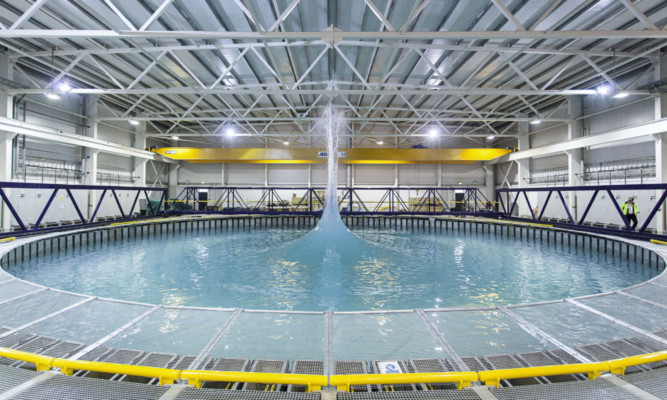New efforts are being made to revitalise Scotland’s severely challenged wave energy sector.
The European Marine Energy Centre (EMEC) in Orkney and the FloWave Ocean Energy Research Facility at Edinburgh University have agreed to work together to help developers advance their technology “from lab to the ocean”.
The move, which follows a turbulent period for the sector after leading developer Pelamis collapsed and rival Aquamarine Power cut jobs, brings together technical input gathered from offshore testing of devices such as the Fife-fabricated Oyster 800 at EMEC, with the research capability one of the world’s most sophisticated tank facilities.
The institutes will work with development-stage companies that respond to the latest funding call issued by industry body Wave Energy Scotland.
The new funding round was announced this week and will see up to £2.4 million released to support novel wave energy projects.
Up to £300,000 of funding is available to each scheme, with the applications deadline falling on August 13.
The best performing devices from the first stage will then have the opportunity to progress their development further in a supported environment.
The third stage will see scaled prototype devices put through their paces on an offshore test bed.
EMEC commercial director Oliver Wragg said: “EMEC provided a lot of dedicated technical input and support to developers in the previous Wave Energy Scotland call for power take-off systems, specifically in the area of test result verification, and we’re keen to provide developers with the support they need to submit a successful bid in this round.”
FloWave chief executive officer Stuart Brown said by working together the institutes could help developers reach their commercial goals.
“By ensuring that tank testing reflects real world conditions to the greatest extent possible, and in particular the actual EMEC sites where devices are likely to be deployed in the later stages of development, FloWave and EMEC can jointly offer a clear route from the lab to the ocean for any new technology,” he added.
